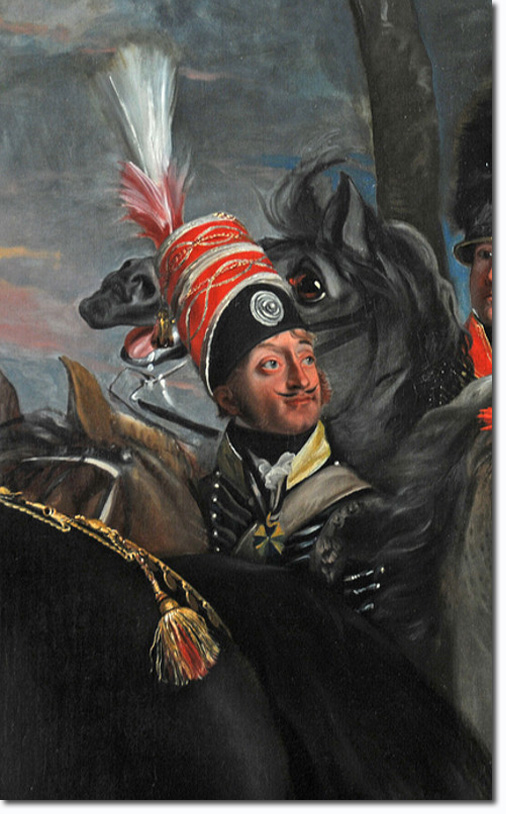|
|


|
|
Friedrich Christian Baron von Eben was born at Creutzburg in Silesia in 1773 the son of a Prussian general. He joined the Prussian army in 1787 and served in his father’s regiment of Hussars against the French in the Low Countries between 1792 and 1795, being awarded the Order of Merit for his bravery. He resigned his commission in 1799 when Prussia refused to renew the conflict with France, and entered British service as a Captain in the York Hussars before joining the 10th Light Dragoons in 1803. A socialite, who counted amongst his personal friends the Duke of Sussex, the younger brother of the Prince of Wales, he also wrote several military treatises on the use of light cavalry, which brought him to the attention of the Duke of York, the Commander in Chief of the Army. In 1802, when York was establishing the Experimental Rifle Corps (renamed the 95th Rifles in 1803), von Eben wrote a treatise entitled ‘Observations on the Utility of good Riflemen’ in which he proposed the adoption of the rifle by both infantry and cavalry. Von Eben’s idea for re-equipping the cavalry with rifles was not taken up, but the Colonel of the 10th Light Dragoons, the Prince of Wales, took a keen interest in the equipment as well as the appearance of his regiment, and ordered a test to be made of two rifles, one made by Henry Nock and the other by Ezekial Baker. The result was clear, and in response Baker was ordered to supply the regiment with an initial 40 rifled carbines.
Von Eben left the 10th Light Dragoons in 1806 and returned to his native Prussia the following year where he served as a volunteer until the Peace of Tilsit. He then appeared in Portugal, where he married Elisabetha Contessa d`Astigarraga, the daughter of a Portuguese Admiral, in Porto 1808, only to lose most of his possessions when the French siezed the city the following year. He joined the Portuguese Army under Marshal Beresford, and from 1809 to 1813 he was present at most of the major battles and sieges of the Peninsular War before being made Governor of Tras os Montes province. In 1817 von Eben was implicated in a conspiracy against the King of Portugal, and but for his friendship with the Duke of Sussex and his association with the Prince of Wales he would probably have been executed. Instead he was exiled, and he ended his colourful military career in the service of Simon Bolivar during the South American Wars of Independence. He died in Bogota in Columbia in 1835. This image of Baron von Eben in 1805 is a detail from a painting in the Museum of Fine Arts in Boston, Mass., by John Singleton Copley titled: ‘Portrait of H.R.H. the Prince of Wales at a review attended by Lord Heathfield, General Turner, Col Bloomfield, and Baron Eben; Col. Quinton in the Distance’. The painting was completed in 1809 and shows the Prince mounted in the uniform of a field marshal. The inclusion of the Baron shows how important he was to the Prince. He wears the uniform of the 10th Light Dragoons, including the red, blue and gold plumed mirleton. This form of headdress was adopted by the British light dragoons briefly from c1803 to c1807. It was copied from hussar regiments on the continent. |
Armed Forces | Art and Culture | Articles | Biographies | Colonies | Discussion | Glossary | Home | Library | Links | Map Room | Sources and Media | Science and Technology | Search | Student Zone | Timelines | TV & Film | Wargames